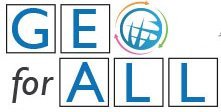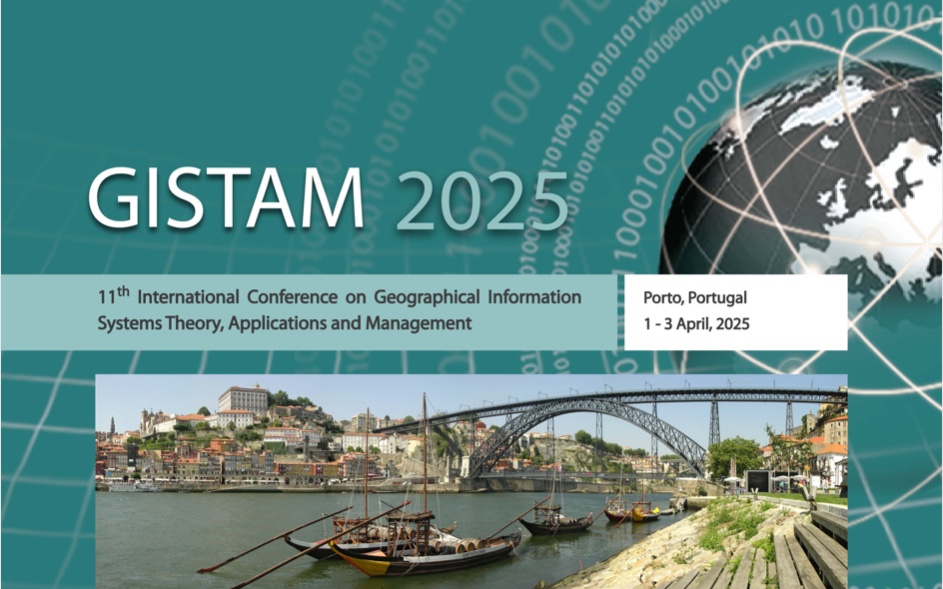The International Conference on Geographical Information Systems Theory, Applications and Management aims at creating a meeting point of researchers and practitioners that address new challenges in geo-spatial data sensing, observation, representation, processing, visualization, sharing and managing, in all aspects concerning both information communication and technologies (ICT) as well as management information systems and knowledge-based systems.
The conference includes original contributions of either practical or theoretical nature, presenting research or applications, of specialized or interdisciplinary nature, addressing different aspects of geographic information systems and technologies.
CONFERENCE AREAS
Each of these topic areas is expanded below but the sub-topics list is not exhaustive. Papers may address one or more of the listed sub-topics, although authors should not feel limited by them. Unlisted but related sub-topics are also acceptable, provided they fit in one of the following main topic areas:
1. DATA ACQUISITION AND PROCESSING
2. REMOTE SENSING
3. INTERACTION WITH SPATIAL-TEMPORAL INFORMATION
4. SPATIAL DATA MINING
5. MANAGING SPATIAL DATA
6. MODELING, REPRESENTATION AND VISUALIZATION
7. GIS AND CLIMATE CHANGE
8. DOMAIN APPLICATIONS
AREA 1: DATA ACQUISITION AND PROCESSING
- Geocomputation
- Geodesy
- Geospatial Architectures and Middleware
- Geospatial Information and Technologies
- Image Processing and Pattern Recognition
- Natural Phenomena Data Acquisition
- Parallel and Distributed Computation
- Performance Evaluation
- Photogrammetry
- Real-Time Sensors
- Seismic Data Processing
- Spatio-Temporal Data Acquisition
- Data acquisition by Communities
- Thermal Imagery
AREA 2: REMOTE SENSING
- Earth Observation and Satellite Data
- Hydrological Remote Sensing
- Hyperspectral Imaging
- Infrared Remote Sensing
- Ocean Topography
- RADAR and LiDAR
- Remote Sensing in Climate Change Studies
- Remote Sensing of Agriculture
- Sensor Networks
- Spectroscopy and Spectroradiometry
- Urban Remote Sensing
AREA 3: INTERACTION WITH SPATIAL-TEMPORAL INFORMATION
- Augmented Reality, Virtual Reality and Mixed Reality
- Geographic Data Accessibility
- Usability Evaluation
- Mobile and Location-Based Interfaces
- Navigating across Spatial Data
- Novel Cartographic Interfaces
- Tangible Interfaces
AREA 4: SPATIAL DATA MINING
- Clustering and Unsupervised Learning
- Outlier Detection
- Decision Support Systems
- Machine Learning for Spatial Data
- Geostatistics
- Geocomputational Methods
- Big Data and GIS
- Data Mining and OLAP
- Query Processing and Optimization
- Storage, Indexing and Searching
- Deep Learning for Urban and Environment Planning
AREA 5: MANAGING SPATIAL DATA
- Geographic Information Retrieval
- Intelligent Data Fusion
- Land Management
- Location-Based and Mobile Services
- Geo-AI
- Spatial Analysis and Integration
- Spatial Data Quality and Uncertainty
- Spatial Information Management
- Spatio-Temporal Database Management
- Web Applications
AREA 6: MODELING, REPRESENTATION AND VISUALIZATION
- 3D Modeling and Simulation
- Cartography and Geodesy
- Computer Graphics Applications
- Computer Vision Applications
- Human Computer Interaction and Visualization
- Spatial Modeling and Reasoning
- Standardization and Interoperability
- Topological Modeling and Analysis
- Underground Geo-Reserves Modeling
- Digital Tweening for GI
AREA 7: GIS AND CLIMATE CHANGE
- Climate Modeling
- Disaster Analysis and Mapping
- Carbon Management
- Water Resources Management
- Air Quality Monitoring
- Agriculture and Animal Tracking
- Forest Management and Climate-smart Forestry
- Renewable Energy Policy
AREA 8: DOMAIN APPLICATIONS
- 3D/4D Cadaster
- Coastal Management
- Ecological and Environmental Management
- Industrial Applications
- Natural Resource Management
- Ocean Engineering
- Oil Exploration
- Transportation Engineering
- Urban and Regional Planning
- Cultural Heritage Applications
- Smart Cities
- Spatial Information and Society
- GI Education and Training
KEYNOTE SPEAKERS
Khairul Nizam Abdul Maulud, Universiti Kebangsaan Malaysia, Malaysia
Anthony Lehmann, University of Geneva, Switzerland
Mihai Daniel Nita, Transilvania University of Brasov, Romania
Although the conference is back to the normal mode (i.e., in-person) speakers are allowed to present remotely if unable to travel to the venue (hybrid support).




